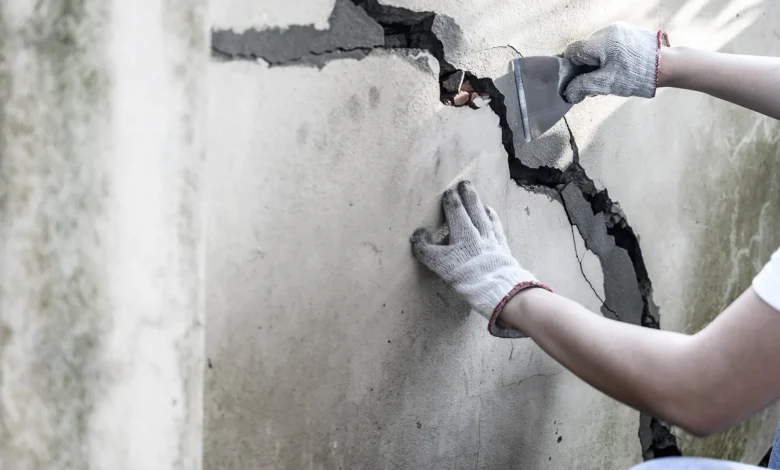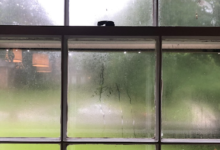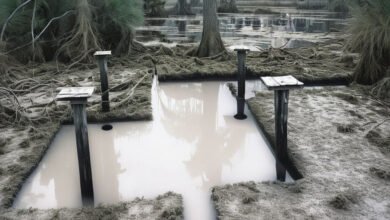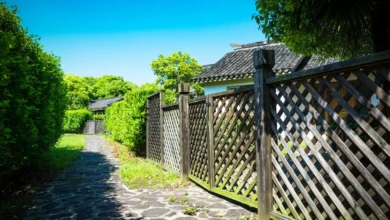Basic Methods Of Sealing and Repairing Cracks in Building Walls

Cracks appear not only in old buildings, but also in new houses. They can be shrinkage, horizontal, vertical and through. The thickness of the cracks is from 1 to 10 mm or more. If they are present, moisture penetrates into the structure and mold forms. The load-bearing properties and resistance of buildings to mechanical impacts are reduced. Cracks grow over time. Small cracks merge into large ones, which can lead to the destruction of the structure. To prevent such problems, it is necessary to carry out repairs in a timely manner. How to repair a crack in a wall inside an apartment or other object, we will tell you further.
Sources of origin
Cracks form for many reasons:
- Vertical ones appear as a result of miscalculations during the preparation of the building project, which led to construction errors. For example, increased loads on lintels and partitions, the use of low-quality concrete, etc.
- Horizontal – occur in masonry mortar due to foundation shrinkage due to soil movement or rising groundwater levels.
- Through cracks are dangerous cracks that quickly cause the house to fall into disrepair. They appear due to deformation of the foundation due to mechanical impacts.
- Shrinkage – formed due to shrinkage of the foundation and deformation of other parts of the house, including the roof.
Cracks also appear when remodeling a building, adding floors or re-equipping premises. For example, when installing powerful equipment that causes strong vibration.
How to seal cracks in a wall inside a house
The following materials are used during the repair process:
- Cement mortar – suitable for eliminating most defects. Bonds well with concrete, aerated concrete walls and brick. The material is convenient for sealing both small and large cracks. Cement is used to restore interior walls and facades. It is used in bathrooms and other rooms with high humidity. After hardening, it can be painted, covered with plaster, wallpapered, etc.
- Adhesive sealant – suitable for eliminating small cracks. Acrylic adhesive hardens slowly, which allows you to make adjustments during repairs. Does not change color over time. Characterized by strength and reliability. Can be painted. Silicone adhesive is more practical. But when working with the substance, you need to take into account that it cannot be painted or puttied. The vinegar-based composition corrodes concrete. Polyurethane adhesive sets quickly. Characterized by flexibility and wear resistance. But it contains harmful substances. When working, you need to use protective equipment. Therefore, the glue is suitable for everyone who is looking for how to seal a crack in the wall of a brick house from the outside.
- Mounting foam is a universal substance that is used to seal large cracks. Repairs using it are simple and quick. Foam is poured into the voids. After drying, protruding pieces are cut off and finishing is performed.
- Plaster – eliminates small cracks well. The effect is achieved due to high adhesion to brick, concrete and other materials. How to seal a crack in a brick wall: you can use gypsum substances and polymer liquids if the repair is carried out in bathrooms and toilets.
When choosing the best way to seal cracks in a wall, you need to consider the type of structure (internal or external), the level of humidity, the size of the cracks and the features of the building.
How to repair cracks in a wall
Cracks can be sealed only after stabilization. It is important to stop their expansion. Diagnostics are carried out to assess the nature of the defects:
- A strip of cement or plaster is applied to the crack. The condition of the fracture should be monitored for a month. If it has not increased, repairs can be made.
- Beacons are fixed in the masonry. The scale on them allows you to evaluate the dynamics of expansion.
- A paper strip is glued to the crack; if it remains intact within a month, the main repair can be carried out.
The paper is used only in dry rooms. The optimal stripe size is 10 x 4 cm. Before attaching the beacons, dust, dirt and plaster are removed from the surface.
The wall repair technology is selected based on the size and location of the cracks. If the cracks are on the inside, you can use gypsum putty. Restoration on the outside or in damp rooms is done using foam, sealant or cement. Large vertical cracks that quickly increase should be repaired by professionals. It may be necessary to adjust the foundation or install supports to the supporting structures.
Sealing cracks in brick structures
Wall repair is carried out using a solution based on gypsum or cement. Work procedure:
- Cleaning the surface from old plaster and other contaminants.
- Moistening the area for better adhesion of the putty.
- Application of the solution – careful sealing of cracks.
- Fastening of reinforced tape with subsequent cementing.
If the cracks are small, epoxy resin is used. The substance should soak the masonry to its full depth. To increase plasticity, a little glue can be added to the mixture.
Repair of cracks measuring 6-10 mm
The procedure is similar, only polyurethane foam is used. It is blown into the hole using a gun. It is not advisable to completely fill the cracks, since the foam expands during polymerization. After hardening, excess material is removed. The repaired area is covered with primer and plaster. In addition to foam, silicone-based sealants can be used. They are resistant to low and high temperatures, as well as humidity.
Repair of cracks larger than 1 cm
The fractures are considered large, so the repair is more complex and is carried out as follows:
- Dismantling the part of the wall where there are cracks, starting from the top.
- Surface cleaning.
- Assembling masonry using the “brick castle” method.
- Installation of steel strips and reinforcement to cover the openings.
If it is impossible to dismantle the masonry, another technology is used:
- Cleaning the area with a brush and moistening.
- Filling the crack with a solution of sand and cement to its full depth.
- Installing T-shaped anchors around the perimeter of the hole and fixing the parts with dowels.
Through cracks can be sealed with plaster. To eliminate large cracks, small brick fragments or fine-grained crushed stone are added to them. The surface is reinforced with reinforcing mesh or other similar material.
How to seal cracks in an apartment wall
The work begins with the expansion of the damaged area. It is necessary to dismantle the old finishing layer and leveler. Then the surface is impregnated with primer. For there to be an effect, the base of the substance must match the material of the structure and the repair composition.
Next, the crack is filled with a repair mixture and the wall is leveled. For dry spaces, a gypsum solution is suitable. For rooms with fluctuating temperature and humidity levels, 2-component polymer liquids are used. A cement solution is used to restore external structures. A polymer mesh is used as a reinforcing layer.
Innovative repair technology
Cracks can be eliminated by injection. The method is suitable for brick, reinforced concrete and other walls. It involves pumping repair compounds into the structures under pressure using special equipment. They completely fill the voids, and after polymerization, qualitatively strengthen the object.
Injection is performed in several stages:
- Cleaning the surface of the damaged area.
- Drilling holes in the structure.
- Installation of packers – tubes through which the substance is supplied.
- Injection of the mixture into the base.
- Removing packers and sealing holes.
To restore the integrity of the structures, low-viscosity epoxy resin is used. A cement solution is suitable, as well as a mixture based on liquid glass.
Conclusion
Cracks in walls differ in their source and direction of expansion. Before repairing a building, it is necessary to identify the cause of the cracks and check the stability level of the structure. The composition is selected taking into account the physical parameters of the cracks and operating conditions. The repair technology is selected according to a similar principle. In the absence of skills and experience, it is better to entrust the sealing of cracks to specialists.






